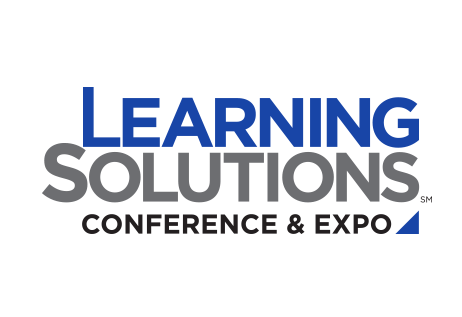Learning Solutions Concurrent Sessions
The Learning Solutions Conference & Expo offers over 100 concurrent sessions covering eLearning best practices, how-tos, case studies, and emerging trends. These sessions will help you develop new skills and knowledge, which will help you build more engaging and effective learning experiences.
Specialized Focuses
In addition to the great tracks at Learning Solutions Conference & Expo, there are a number of specialized sessions curated to help you put your skills into practice immediately.

The AlignED series of sessions focuses on what higher ed and corporate learning professionals can learn from one another. These sessions help bridge the gaps between academic and corporate education.

B.Y.O.L.® (Bring Your Own Laptop®) workshops ensure that you receive in-depth, hands-on training and enable you to follow along with the instructor step-by-step.
Filter By:
Sessions in Block 3
Designing training without an understanding of how the brain works is a lot like trying to get somewhere without a map. Even if you eventually arrive at your destination, you won’t know how you got there so that you can do it again. Once you understand how the brain works, you can use the attention, engagement, encoding, and retrieval processes of the brain to make training that is more effective, takes less time to produce, and delivers more lasting results.
Read MoreToo often, learning is evaluated based upon one of two measures: whether learners like it, and/or how much it costs to produce. Unfortunately, the former isn’t useful, and the latter isn’t critical. Yet, increasingly, actions will have to be documented, and measurement is key. There are meaningful metrics for learning, but they should be about whether they are helping the organization. Kirkpatrick, ROI, impact—to make sense of these, you need to know some core concepts.
Read MoreLS303 Using Gamification to Develop Leaders and Increase Business Acumen
Concurrent Session
What are some creative ways to develop leaders? Business acumen is typically obtained through experience. Developing learning solutions that grow business acumen in an effective way is difficult to produce. Especially when the content is nuanced or complex. Gamification is one of the topics buzzing around the industry, but if you speak to many people, there is little application beyond putting badges on existing content.
Read MoreLS304 Sketchnoting: Capturing Ideas and Concepts with Visual Narratives
Concurrent Session
Sketchnoting is a visual language with a hierarchy and structure similar to written language. In order to communicate visually, or in this case communicate to yourself with your own notes, you start with the visual basics and look at the building blocks. Sketchnoting is about listening, processing, and transferring the key ideas into telling a story with your notes.
Read MoreLS305 Mitigating Hidden Bias in Instructional Design
Concurrent Session
For instructional designers and facilitators, the challenge is to create learning materials that reach and affect audiences positively, and do not elicit feelings of exclusion or discrimination. However, you’re human, and every human has hidden or unconscious biases that impact our behaviors and thoughts. This can lead to unintentional missteps in design and delivery. As learning becomes more story-driven, you need to be sensitive to how you present characters, including race, gender, gender identity, and organizational roles.
Read MoreDo your eLearning courses need a punch of creativity? Have your users grown tired of the same drag and drop interactions? Would you like to add something new and exciting that will increase learner retention? With the brain processing visual information 60,000 times faster than text, it’s crucial to have visual impact in your courses. The good news is that design tools are more powerful than ever and provide developers with more options for creativity.
Read MoreTechnology continues to advance rapidly, changing how we live and interact with the world around us. Today’s learning professionals face the challenge of staying ahead of this curve and tracking the technologies that are shaping the future of organizational learning, while at the same time recognizing technologies that may be more of a passing fad.
Read MoreAccording to Forbes, 61 percent of companies that have LMS systems plan to replace them in the next two years. However, nearly a third of smaller companies still do not have a LMS to deploy training. Many companies are well advanced in terms of online training and development for their employees, but many are late adopters. How do you get from behind the curve? Should you? And if so, how do you go from not much, to state-of-the art?
Read MoreLS310 Brain Science and Learning: Seven Tips That Will Dramatically Improve Your Training
Concurrent Session
As trainers, we work hard to create great training. As a result, we are disappointed when our employees fail to learn or don’t transfer learning back to their workplace. We may be tempted to blame our students, but the truth is that we often fail because we don’t understand the mind of the learner. As a result, we build training modules that are not consistent with the brain’s natural means of acquisition. Teaching should be more effective, and it can be more effective once we understand how the learner’s mind operates.
Read MoreDeveloping eLearning content within a website is very easy if you know your tools, tags, rules, etc. The problem is that the rules keep changing. The way web content was built two years ago does not follow today’s best practices. More and more power has also been given to CSS. Applying some of these new rules can not only be difficult to remember, but knowing how and when to apply these rules adds to the complexity.
Read MoreECO313 What Netflix and Facebook Can Teach Us About Corporate Training
Concurrent Session
Netflix knows what you want to watch because its algorithm interprets audience data and weighs those insights against the content in its library. With each like and click, Facebook continues to build an empire around the idea that social media can be as personal as your name. Every experience is catered to the individual, except the way employees are trained. Calculating the ROI for employee development can be costly and difficult, yet with the 21st century economy becoming more dependent on knowledge workers, on-demand skill development is critical to success.
Read MoreJetBlue University (JBU) has recently built a hotel for its employees going through training, and is in the process of implementing a new learning management system with a social learning component. Several of JBU’s workgroups are adopting iPads for use in their workflows. With all of these new opportunities for use in training, JBU needed to look at its current learning landscape, and determine if the current strategy supports where it wanted to go in the future as it relates to training and employee performance.
Read MoreStudents don’t know what they don’t know. This concept applies not only to academics, but to learners in any environment. This means that educators and developers are constantly developing resources that focus on what they anticipate the learner needs. Adaptive learning technologies are now providing the data that allows us to understand specific knowledge deficiencies. This is not only changing the learning environment, but also the process by which content is generated.
Read More


























